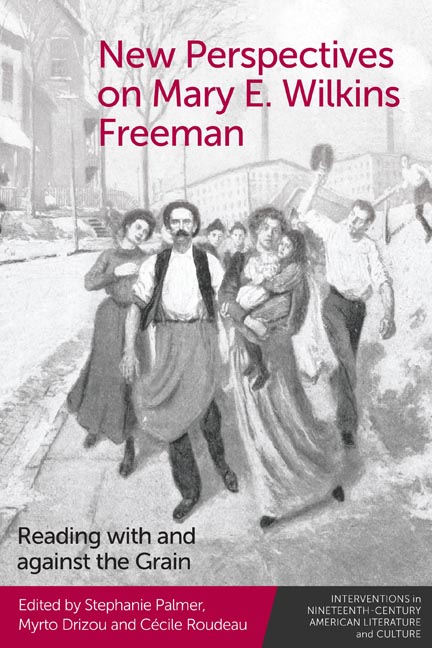Book contents
- Frontmatter
- Contents
- List of Figures
- Acknowledgments
- Contributors
- Reading Freeman Again, Anew
- Part I Kinship Outside of Normative Structures
- Part II Violent, Criminal, and Infanticidal: Freeman’s Odd Women
- Part III Women’s Work: Capital, Business, Labor
- Part IV Periodization Reconsidered
- Afterword: Why Mary E. Wilkins Freeman? Why Now? Where Next?
- Index
5 - Transatlantic Lloronas: Infanticide and Gender in Mary E. Wilkins Freeman and Alexandros Papadiamantis
Published online by Cambridge University Press: 20 October 2023
- Frontmatter
- Contents
- List of Figures
- Acknowledgments
- Contributors
- Reading Freeman Again, Anew
- Part I Kinship Outside of Normative Structures
- Part II Violent, Criminal, and Infanticidal: Freeman’s Odd Women
- Part III Women’s Work: Capital, Business, Labor
- Part IV Periodization Reconsidered
- Afterword: Why Mary E. Wilkins Freeman? Why Now? Where Next?
- Index
Summary
In “A Poetess” (1890), one of Mary E. Wilkins Freeman’s best-known stories, Betsey Dole, the protagonist, is a frail, childish-looking old maid who revels in the affective power of poetry. When her sentimental style becomes the target of the local minister’s critique, Betsey loses her confidence and eventually her life, consumed by emotional and physical affliction. The story makes a strong point about changing literary mores, since the minister champions the modern style of urban magazines, which heralds the death of Betsey’s poetry (and life). This experience of loss, however, is refracted by a deeper source of grief, the pain that results from losing a child. Betsey is called to write a poem that commemorates Mrs Caxton’s son, Willie, whose death haunts the bereaved mother and triggers the poetess’s sympathies. The childless Betsey admits to the difficulty of identifying with a mother’s grief but uses poetry as a vehicle to visualize the “faces of children that had never been” (39) and to birth her own offspring, namely, her art. When she is crushed by the minister’s critique, Betsey burns the offspring of her mind, committing a symbolic act of infanticide that precipitates her own demise. This poignant act, indicative of the vexed relationship between authorship and motherhood, becomes a dominant motif that takes different forms throughout Freeman’s canon.
Later stories, such as “The Little Maid at the Door” (1892), “The Lost Ghost” (1903), and “The Wind in the Rose-Bush” (1903), make repeated references to infanticide as a gesture of communal or individual negligence. These stories rely heavily on the Gothic to represent the pathos of lonely dead girls who come back to haunt childless, caring women. As Beth Wynne Fisken points out, Freeman “return[s] again and again to the plight of an orphaned and neglected child, badly in need of safe harbor and a surrogate parent” (43). The spectrality of these children suggests Freeman’s attempt to exorcise her own ghosts, especially the ones that evoked “unresolved tension with her own mother from her formative years” (Reichardt 111).
- Type
- Chapter
- Information
- New Perspectives on Mary E. Wilkins FreemanReading with and against the Grain, pp. 95 - 111Publisher: Edinburgh University PressPrint publication year: 2023



